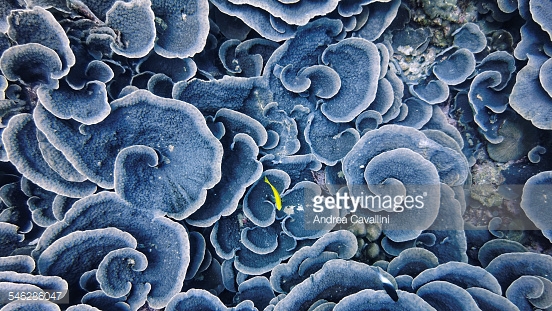Human activities indirectly have a great impact on the coral. Our agriculture system, deforesting activities or even overgrazing and mining leads to pollution of the rivers. You may ask yourself how the pollution of the rivers can affect the Coral living areas. The rivers take all the different forms of pollution and finally debouch into the ocean. In the end the high quantities of sediments caused by human activities have a negative effect on the costal reefs. These effects can be observed by the smothering, weakening or even killing the corals. It is found that sedimentation can reduce photosynthesis and slow coral growth. Moreover, high levels of nutrients leads to an increase in the amount of plankton. High numbers of plankton can block the sunlight. Remember, both polyps and algae needs the sunlight to survive. Darkness leads to decolouring of the corals, a phenomenon which is called bleaching. Finally, as a result of less oxygen, dead zones are formed.
Just take a moment to think about the impact of tourists.
As you have seen, tourism bring a lot of money and jobs. But at the same time they can cause a lot of damage. South-east Asia popularity is increased enormous in the last 10 years.
“How many people travel around SEA, what do you think?”
In 2015 there were 279 million international tourist arrivals.
“That is 55 times the population of Singapore…”
The tourist industry does have a negative effect on the reefs, every day thousands of commercial and recreational passengers passing by the coastal areas. All those people bring various forms of waste and are transported by big boats. Especially, cruise ship holidays are highly popular in South-east Asia, with China is the main driver of the passenger growth. Between 2012 and 2014 the total amount of cruise ship passengers had a growth rate of 34% and the cruise industry transported 2.17 million passengers in 2015. Those cruise ships damage the ocean by oil spills, anchors and are a significant source of pollution. Plastic waste is probably the most noticeable form of pollution, it directly damage the corals physically and can choke or kill fish and turtles. Researchers estimate in 2014 a minimum of 5.25 trillion particles of plastic debris are currently floating in the sea. Leaking oil is another major problem, it causes tissue and larval death and an increase in calcification. Another problem caused by those enormous ships is displaced water, they accidentally transport species into new habitats. Those invasive species disturb the coral reef ecosystem by killing native species. It is known that coral reef recovery processes are slow, it takes decades for physically damaged reefs caused by plastics or boat touching to fully recover.



